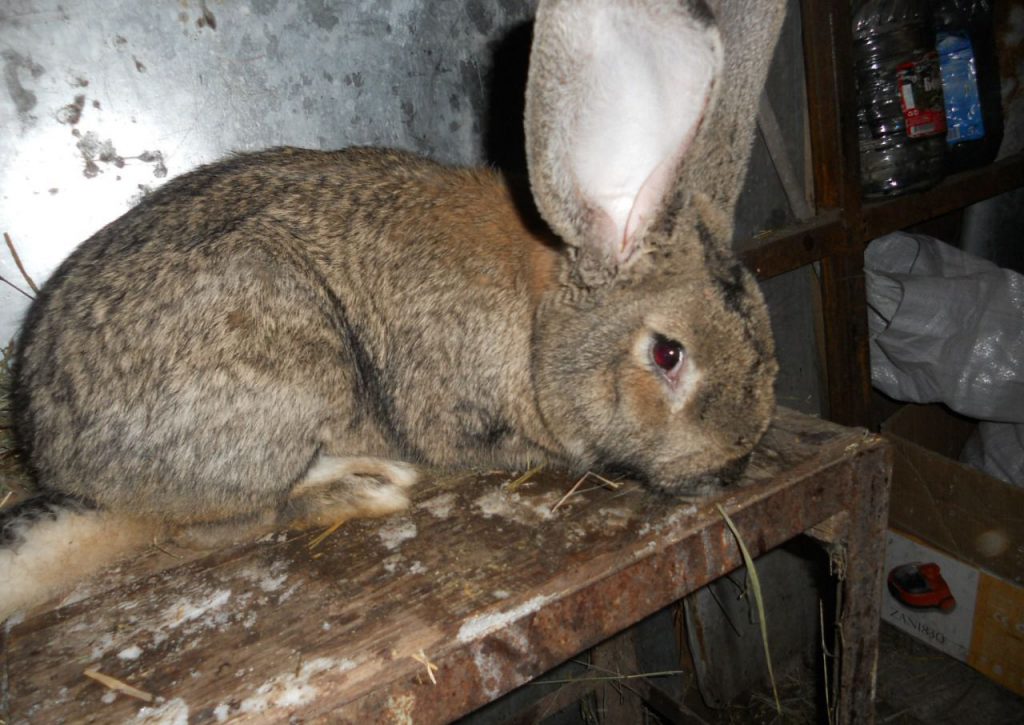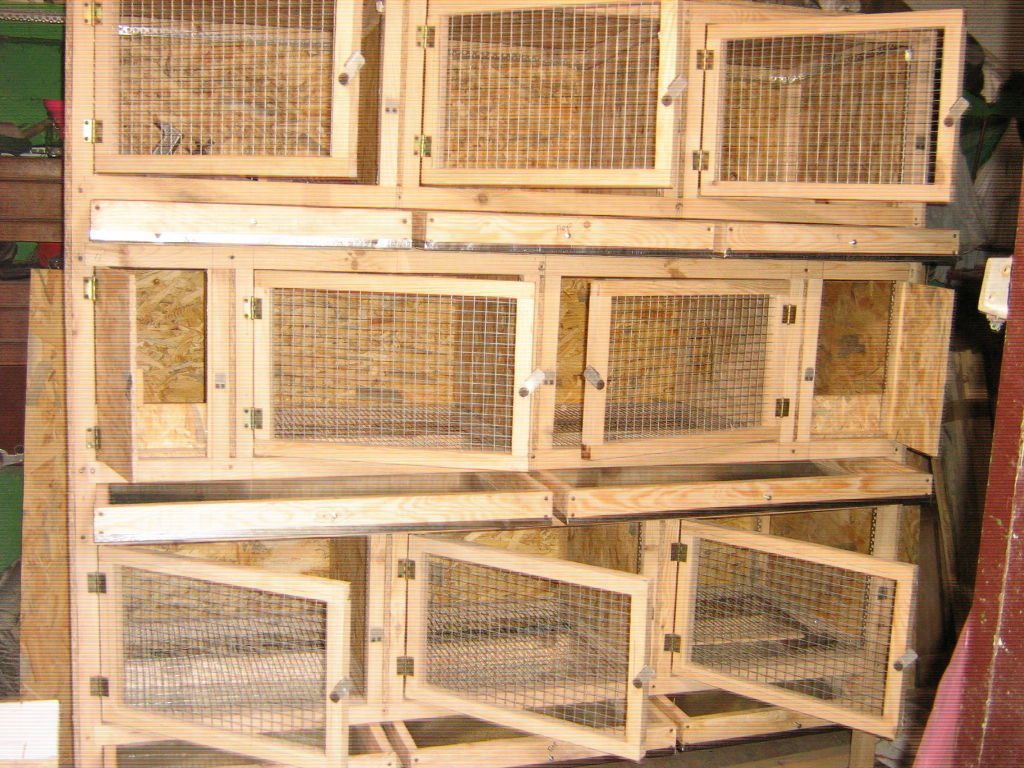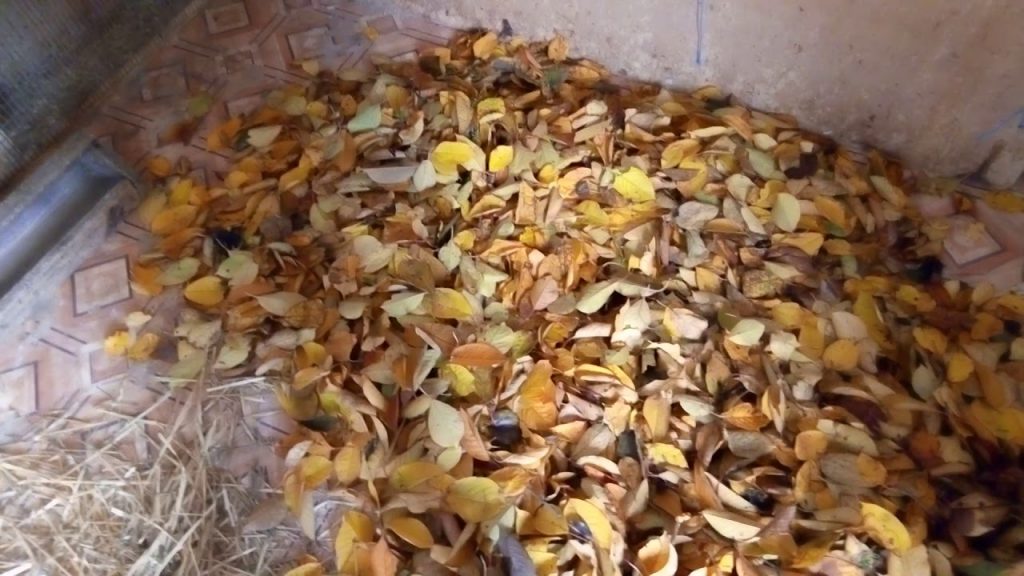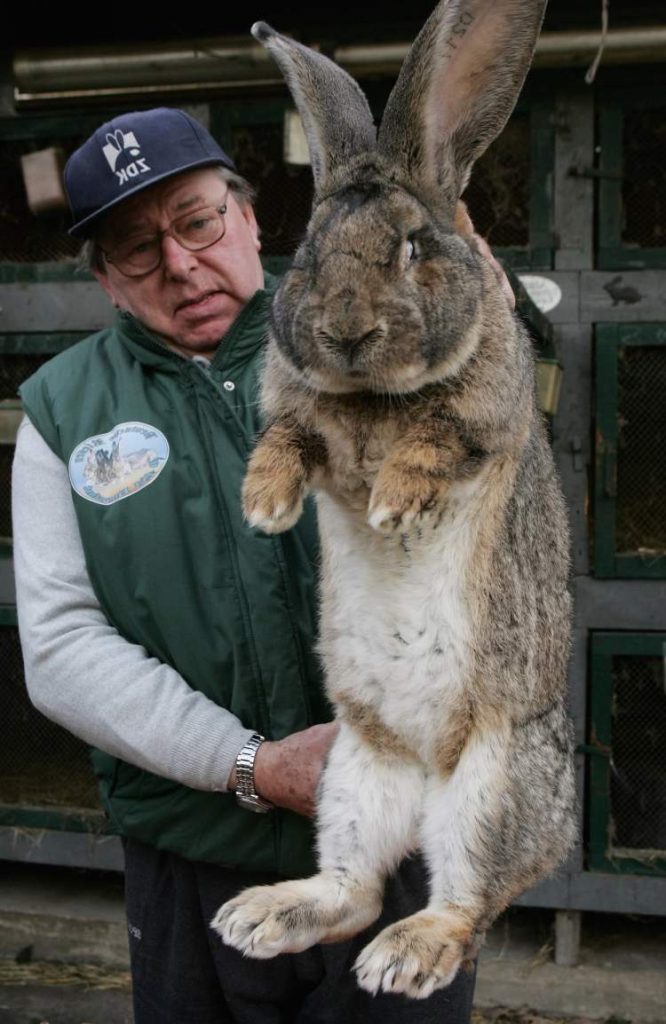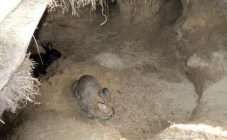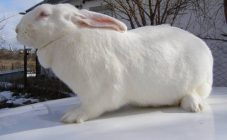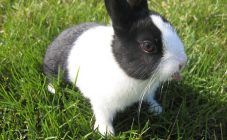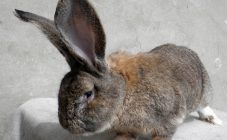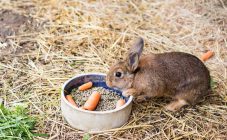Content:
Among the variety of rabbits, the Flanders breed is valued for its fertility and weighty size. They are also called the Belgian giants. How they look, what they prefer from the food and what conditions they require, that is, everything about the Flanders rabbit breed is below in the article.
The origin of the breed
There is an opinion that the breed was bred in the Belgian region of Flanders (flandr - French), from where it got its name. According to some breeders, it was bred by crossing several species: Patagonian, Argentine and Flemish. Others believe that individuals brought from the United States in the 18th century became the basis for the variety. This statement has one significant contradiction, since the eared ears who arrived for mating were lightweight, and the flanders are still giants. The third opinion says that the breed was obtained by crossing huge Flemish rabbits, which eventually disappeared as a species.
Be that as it may, the first mention of the breed was recorded in 1860. 33 years later, the first world standards for the breed were approved. On its basis, new large varieties began to be developed.
The breed came to Russia during the Soviet Union, when rabbit farming began to develop during the transition to a planned economy. On the basis of flanders, the Gray Giant and Soviet Chinchilla breeds were bred.
Description of the breed
The information also differs on the account of the appearance of the rabbits: some believe that the Belgian rabbit is not very beautiful because of its awkward massiveness. Others find bunny looks cute and keep them as pets. One way or another, the many varieties of flanders rabbits share the standard of breed description.
Signs of a thoroughbred eared eared:
- The flanders rabbit has a large body, which reaches a length of 70 cm. The chest volume is 38 cm. The back is distinguished by a slight concavity.
- There are several standard coat colors: white, opal, blue, sand, fawn (sandy red), silver, opal, agouti (gray-orange), dark gray, gray, black.
- The rabbit has a large head with large cheeks.
- The ears are widened in the lateral part, set vertically Ear length reaches 25 cm.
- The average weight of flanders ranges from 6 to 12 kg. Males weigh 10-12 kg, females 7-9 kg.
- Thick coat length 3-4 cm.
- For one litter, the rabbit brings 8 rabbits. Sometimes the number of babies can reach 15 individuals.
- The breed is characterized by the rapid weight gain of newborn rabbits. One month after birth, they weigh 700 g. Each month, the figure doubles, provided the correct content. By the year, the individual weighs 5-6 kg.
Breed productivity
Rabbits are puberty later than other breeds. Reproduction is possible only from 8 months of age. How many rabbits can there be in one litter? On average 7-8 babies. The maximum number of newborns after birth reaches 12-15 individuals. Females are able to feed even more due to the increased milk content during lactation.
Rabbit keeping
When keeping flanders, all the nuances of the breed are taken into account.For individuals, Russian frosts are dangerous, therefore, in the winter, the room for keeping rabbits must be heated.
Due to the massive size of the animals, the cages should be made larger than for normal breeds. Optimum would be 110 * 70 * 50 cm for one individual and 17 * 110 * 50 cm for a rabbit with children.
Disease and pest control
Flanders rabbits are resistant to infectious diseases if the cages are kept clean.
A prerequisite for caring for rabbits is timely vaccinations. Without vaccination, they can develop myxomatosis, pasteureliosis and viral hemorrhagic disease. The first vaccination is carried out when babies reach the age of 1.5 months, and then every year.
You should also check your animals' ears regularly for ticks. The first sign of the presence of sucking parasites is the appearance of scabs in the auricle. For treatment, drugs are used that are recommended for a specific age and body weight.
In summer, you need to protect rabbits from direct sunlight. They can cause sunstroke. For shading the cells located outside, use branches, grass or straw, which are stirred on the roofs. In winter, rabbits should be protected from drafts, which can cause frostbite on the ears. For this, a large amount of straw is placed in the cage.
Rabbit feeding
Flanders' diet should be varied. Meals can consist of grains and wet mash of grated vegetables or compound feed. Rabbits can be fed pumpkin, boiled potatoes, carrots, beets, or cabbage. There should always be hay in the feeders and containers with clean water. As additives, salt, meat and bone meal and preventive medicines are mixed in small quantities.
The Belgian giant is a rabbit that does not tolerate potato tops, stone fruit tree branches, elderberries, and broom as food. Among the herbs, hellebore, nightshade, henbane, celandine, lily of the valley, cornflower and St. John's wort have a detrimental effect for them.
Breeding flanders
Only healthy rabbits should happen. After mating, the female must be transplanted into a separate suitable cage. Okrol can be performed at any time of the year, except in autumn. During this period, rabbits suffer from molting, and daylight hours are also reduced, so necessary for newborn rabbits.
In summer, females hunt every week, in winter - every 9 days. Duration - 5 days.
Signs of sexual desire:
- decreased appetite;
- agitated behavior;
- the genitals become brightly colored.
As a preparation, the diet is changed: the amount of vitamins and minerals is increased, the males are given more steamed grain and boiled potatoes.
To carry out mating, the feeder and drinker are removed from the male's cage, then the rabbit is placed. After 6 days, the replanting is repeated. If the female is pregnant, she will run away from the male, scaring him off with loud sounds. The expectant mother is provided with peace, good nutrition and fresh water. In the absence of the latter, the female can eat her cubs.A large amount of water will provide the rabbit with sufficient milk. Flandre rabbits should be deposited at the age of 3 months.
Breed advantages and disadvantages
Each breed has its own advantages and disadvantages, distinguishing them from other members of the hare family.
Pros of the flanders variety:
- High fertility and milk production of females.
- High survival rate of rabbits.
- Rabbits are not picky about food.
- The character of the animal is balanced and calm.
- Unpretentious care.
- The breed is resistant to some diseases.
- It is possible to keep the breed as a pet in apartments.
Disadvantages of flanders:
- Due to the small amount of fluff and uneven hair growth, the skin is of poor quality and is not suitable for processing.
- Restless appetite in adult rabbits.
- The breed has congenital underdevelopment and curvature of the limbs.
- Despite its weighty size, flanders do not belong to meat breeds.
Flandre rabbits have been known for over 100 years. They are bred for different purposes: someone for beauty, someone for getting even a small amount of meat. Breeding does not require a lot of effort, but with a little care and patience, a large number of healthy and robust rabbits can be produced.
